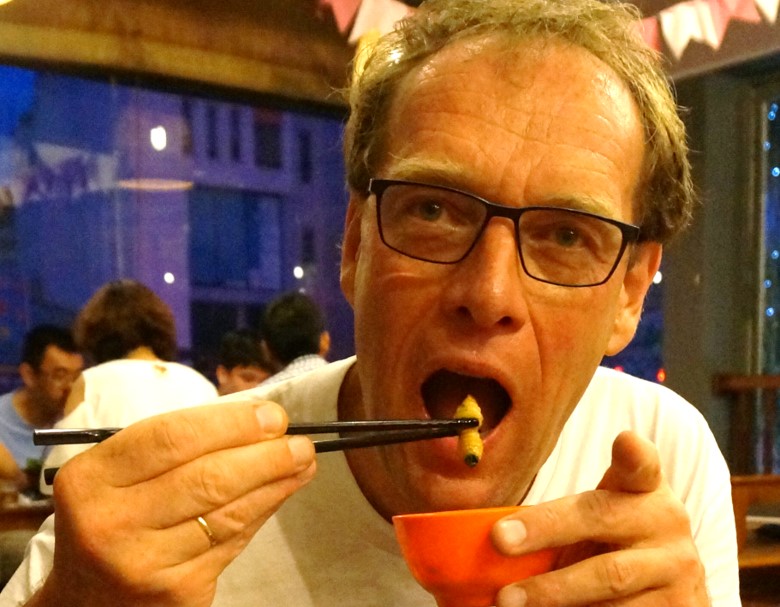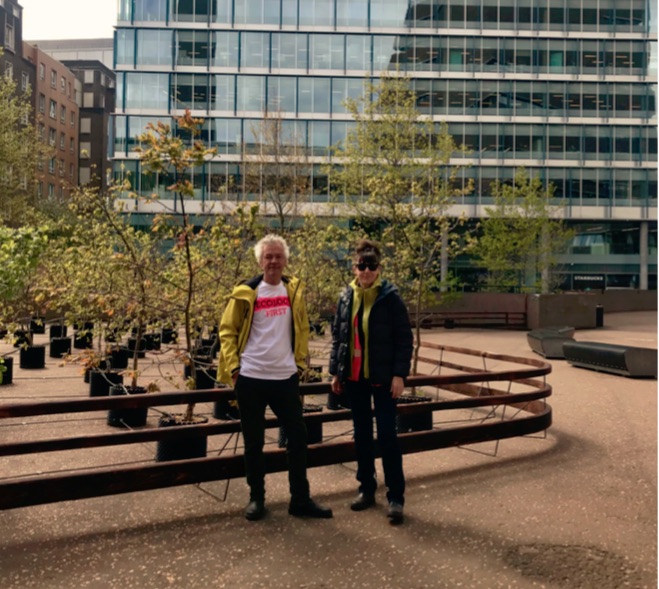As part of GroundWork Gallery’s long-term interests in connecting art, science and environmental sustainability, here we discover the distinguished Dutch Professor Marcel Dicke’s thoughts on insects. Coinciding with the recent exhibition, Bugs, Beauty and Danger, this subject is topical. Dicke’s conversation with writer and artist Karen Eng, turns to the subject of insects as food, and how increasingly he has become interested in their appearance in art.
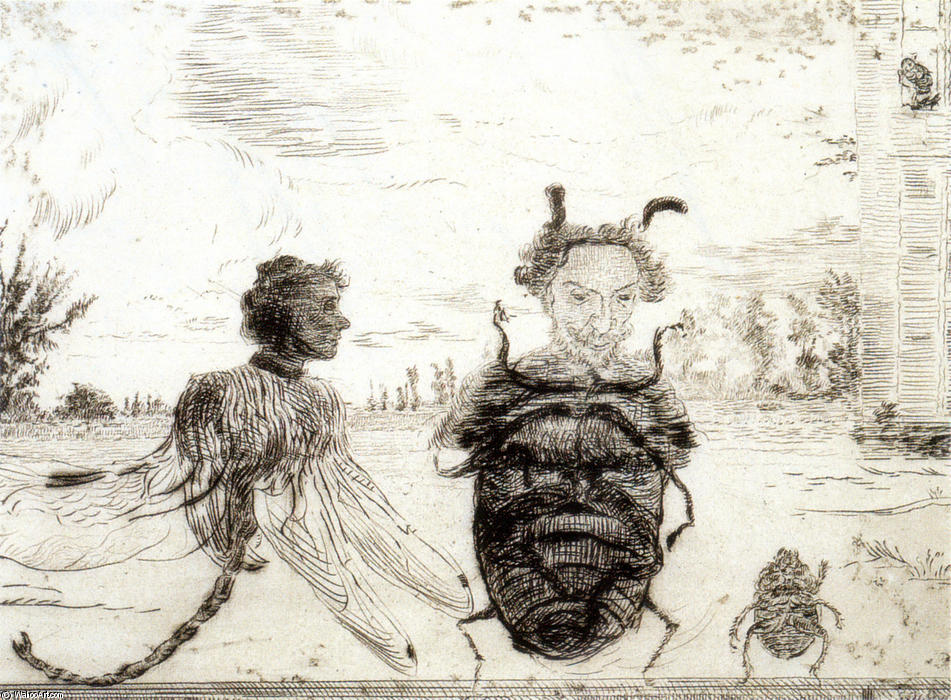
Marcel Dicke
Did you know that plants communicate with insects? Wageningen University Professor of Entomology, Marcel Dicke’s breakthrough research shows that plants under attack by bugs can send out a chemical SOS signal to attract their attackers’ predators. His paradigm-shifting discovery opened up a whole new field of study – plant-animal interactions. in 2007, Dicke won the prestigious NWO Spinoza award for this research.
Marcel Dicke investigates tirelessly the ways in which insects can contribute to the good of humanity.
He has devoted much of his time to popularising bugs, offering lectures on their many wonders. Also he has produced festivals celebrating them, and even hosted a world record–breaking insect-eating event.
In 2010, he delivered a funny, impassioned, and informative talk – “Why not eat insects?” – at the TEDGlobal conference, in Oxford. In this talk, which has had well over 1.5 million views, Dicke made the case for raising insects as a nutritious and environmentally sustainable source of food. He even made it sound appealing.
Perhaps we shouldn’t be surprised, then, that Dicke also happens to be a self-taught expert on insects in art—making him the perfect person to interview in connection with our recent Bugs: Beauty & Danger exhibition. Read on for Dicke’s unique and far-reaching perspective on humanity’s relationship with insects.
Why not eat insects?
K E. You and I originally met in Oxford at TEDGlobal 2010. At the time, you said in your very popular talk “Why not eat insects?” that by 2020 we’d all be buying and eating insects. Can you tell me where we are with that prediction?
M. D. I was actually too pessimistic in 2010. By 2014, Dutch supermarkets already had insects on the shelf! They started to sell both insects as food, where you could see what they were – locusts, mealworms – as well as products in which insects were incorporated, like burgers. Meanwhile, internationally, insects as a human food source has really grown tremendously. When insects came into the supermarkets, the legislators were resistant. But in April 2020, news came from Brussels saying that, pretty soon, insects will officially be allowed on grocery shelves in the European market in all 27 countries. And on 13 January 2021, this happened, with official approval by EFSA for mealworms to be sold in the EU as human food.
There are tremendous investments being made at the moment in both insects for human consumption but also for livestock feed, in the Netherlands, Belgium, France. Beyond the European Union, there are big companies as well in the United States, Canada, South Africa, and China. We are talking about tens of millions of euros being invested in setting up production units. One Dutch company is focusing completely on feed, and the Dutch king opened their new facility last year in June. He held a handful of fly larvae, declaring that this is the future and is contributing to circular agriculture.
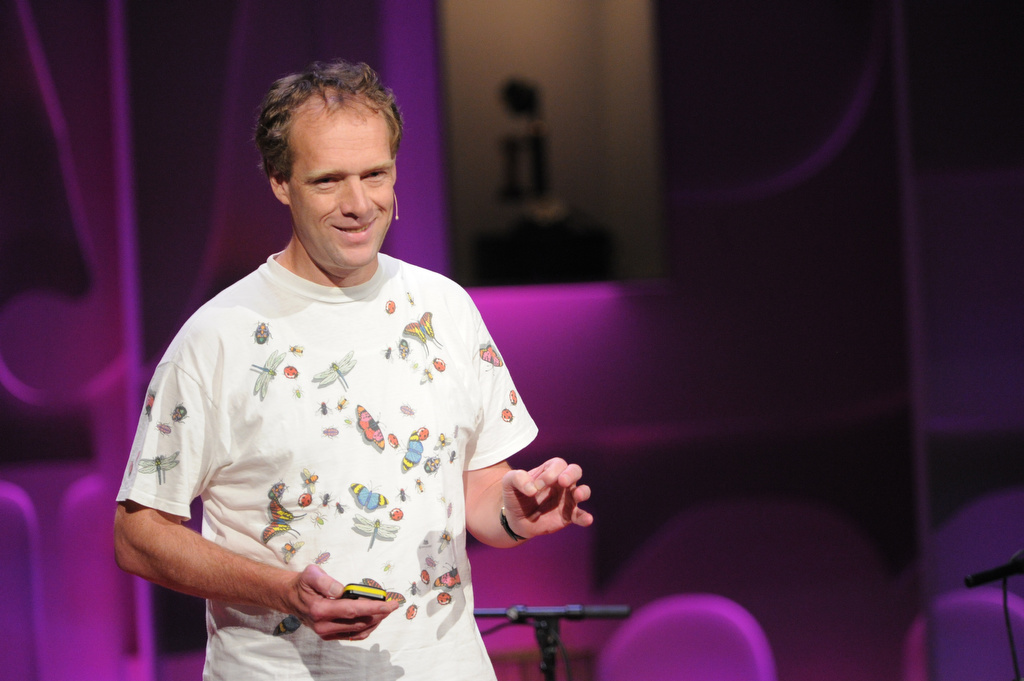
K.E. When you encourage using insects for food, you’re talking about farmed, not foraged insects, right?
M. D. Right. We don’t want to encourage the consumption of wild insects for several reasons. One is that there’s a huge diversity of insects, and some feed on toxic plants. They store the toxins that the plants make, so the insects become toxic as well. It’s the same as harvesting mushrooms: if you go out in the forest, you need to know exactly which ones you can and cannot pick to eat. And we all know by now that insects are declining, so we don’t want to get people collecting in nature. We can produce them very well just like crops or livestock.
Why is eating insects ecologically sound?
K. E. What kinds of insects are being reared for food?
M. D. For human consumption we’re mostly rearing locusts, crickets, and mealworms. Companies are not only selling them as whole foods, but also developing new products using insects as ingredients. There is a huge diversity of products coming available, for example flour mixed with ground insects. We look especially to the American Midwest for that. It’s a protein-enriched flour that you can use for baking bread or for making protein-rich pasta. I’ve also seen developments in tofu-like products. It’s a clever move, because if you don’t see the insect, the product is more likely to be accepted initially by a wider public (even though of course the ingredient is marked on the label).
The most important insect used for livestock feed is black soldier fly larvae. It’s valuable because it’s an insect that can feed on a wide range of organic side-streams – in other words wastes originating from food production, like spent grains that were used for making beer, or supermarket wastes. So they can be reared on a very diverse set of resources. This means they are helping us recycle waste, while becoming feed for livestock. It’s a very sustainable way to feed livestock. They’re the perfect alternative for soy or fishmeal.
K. E. Can you give us a real-world example of how and why using insects in this way is ecologically sound?
M. D. We’ve been engaged in doing experiments and setting up production of these black soldier flies not only for big companies in the West, but we’ve also just completed a major project in Kenya, developing rearing systems that can be used by smallholder farmers so that they can use their own waste streams to produce black soldier fly larvae to rear chicken, eggs, pigs, or fish. There are also now farmers who produce only larvae on the neighborhoods’ waste streams, then sell it on as livestock feed. This means that farmers no longer have to depend on fishmeal for feed.
This is helping to bring fish biodiversity back to Lake Victoria, which has been overfished – and reduces the need to buy feeds from Europe that are very expensive and still include fishmeal. Replacing soy with fly larvae will also help save forests being cut down in Brazil.
It doesn’t stop there. The waste product generated from raising insects for food also makes an excellent amendment to improve soil and crop health. It consists of the molted skins of the insects and the uneaten substrates mixed with insect manure. In our experiments using this material to enrich soil, we’ve seen a tremendous improvement in crop growth, yield, seeds and even interactions with pollinators.
So I now see rearing insects as part of developing a circular agriculture. It starts with replacing regular meat with insect meat in food production. This will reduce our ecological footprint from the 70% of all agricultural lands currently being devoted to livestock production.
Plants cry for help by excreting chemical signals when they are being fed on by insects….
K. E. You mentioned that amending soil with insect livestock waste affects plant-insect interaction – which is the subject of the scientific research you’re best known for. How does that work?
M. D. Yes, the amendments change the soil microbial community. We’d already been doing research showing how microbes in soil can improve the responses of plants – primarily cabbages and mustards – to insects, so that when insects start feeding on the plant, the plant can defend itself better. My original research looked at how plants cry for help by excreting chemical signals when they’re being fed on by insects, thereby attracting the predators of those insects. It seems the amendment influences this process as well. Now we’re trying to figure out exactly how it works. Our collaborators in Kenya are conducting similar experiments with tomatoes, beans, and so on.
K. E. Can you tell us how you made the transition from this line of research to being interested in insects as a food source?
M. D. It all started when my colleague Arnold van Huis and I organized a lecture series to popularize entomology for a general audience. It included about a dozen lectures on different topics, including insects and pollination, insects in human history, and insects as food. Arnold, a tropical entomologist, had lived a long time in several African and Central American countries, where he’d observed how people eat insects, so it became one of our lecture subjects.
At first people saw us as these wacky professors in Wageningen talking about insects as food as a novelty. With time, it became clearer that after the turn of the century, the human population would grow to eight, nine, and now we think 10 billion people.
So interest grew. In 2006, I organized a big festival in Wageningen called City of Insects – a weeklong festival involving everyone in town. We had a cinema showing movies about insects, restaurants serving insect dishes prepared by the local hotel school. We had schools, shops, the theater – everyone – involved. And 20,000 people came. We have only 30,000 inhabitants in the town! So it was a tremendous success.
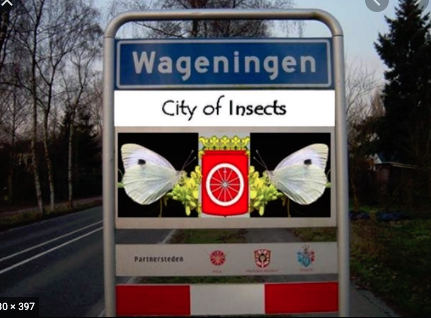
On the last day, I organized a kind of competition. Let’s see if we can set the world record for the largest number of people eating insects at the same time, and eating exactly the same thing. So we had 1,747 people eating the same dish on a square.
Afterwards, companies came to us and said, “We see there’s a future in this and we would like to develop it. Can you help us?” So Arnold and I started working with companies. In 2012 we applied for funding to the Dutch Ministry of Agriculture, and they provided us with 1 million euros. Astonished colleagues at the university said, “I thought you guys were just playing around!” So that’s how we started doing serious research on it.
K. E. You are also a huge enthusiast for insects in art. In fact, you’ve written an extensive paper on it. How did this interest come about?
M. D. It came out of the same lecture series. While Arnold was talking about insects in food, I decided to talk about insects in culture. So I thought it would be good to touch on art. I asked around to find a specialist on the subject, but people didn’t even understand the question. So I decided we were never going to find that specialist.
I thought, well, I like to go to museums, and I remember seeing an insect here and there. From now on, whenever I go to a museum, I’ll simply take my notebook and write down every insect I see. So it started like that.
My wife, who studied art history, said, “Oh, here comes the scientist, who is going to quantify.” The interesting thing was I began, in every museum, to look at the full collection. It didn’t matter what the movement was – I looked at everything. I found many more insects in some movements than others. I started to get a view of the history of art in my own particular way.
So it became fun. I wrote the paper in 2000 (“Insects in Western Art”, American Entomologist, Volume 46, Issue 4) and now I have a database of 4,500 artworks featuring insects. It’s continuously growing – like discovering the artists in Bugs: Beauty and Danger exhibition. I didn’t know these artists, so now I’ve explored their work, and it’s amazing. In Sarah Gillespie’s interview, she emphasized she’s not an entomologist, she’s an artist. And, well, I’m not an artist. It’s nice to see different perspectives and develop new insights.
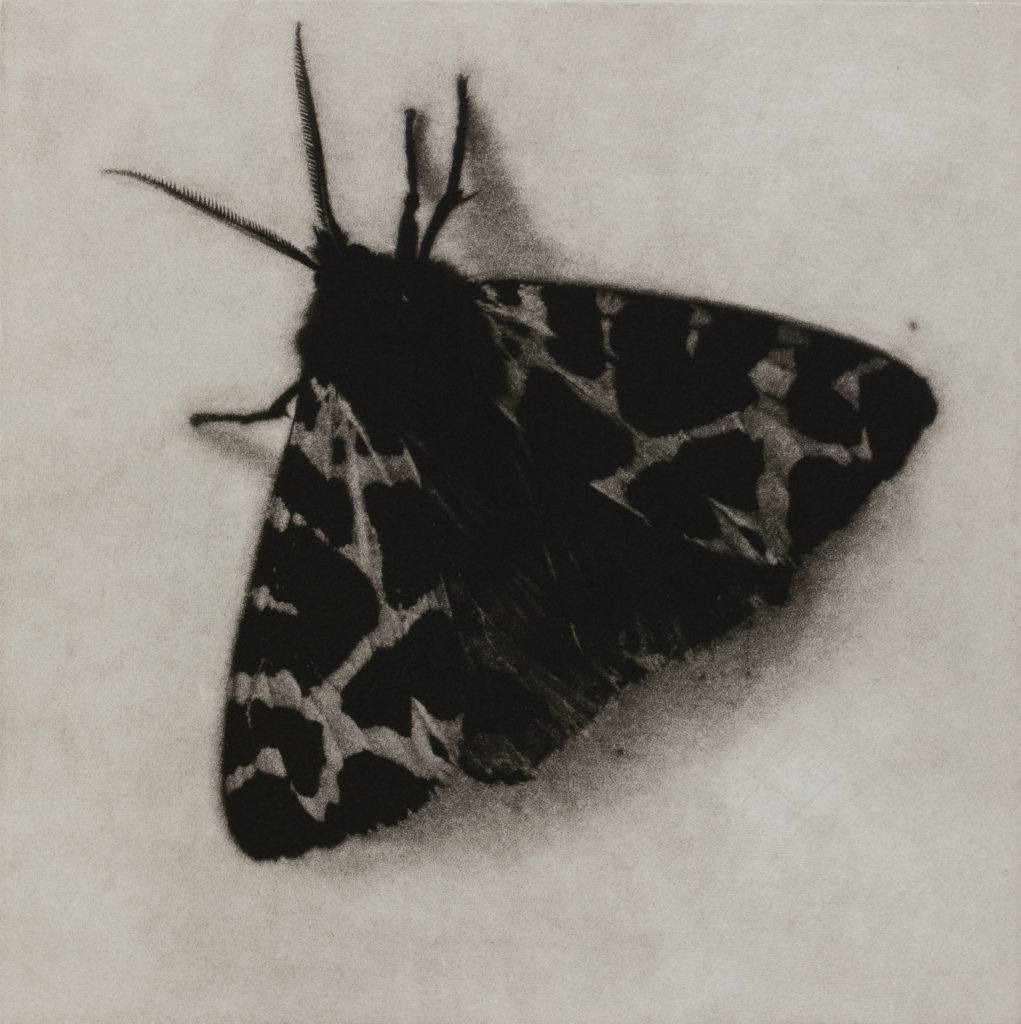
K. E. I know a few scientists who are also artists and have wondered if scientists approach making art differently? Or do you use it to escape from the quantitative aspect of science? You’re clearly extremely creative.
M. D. I think it would be nice to make art, but I simply don’t have the time for that. But I do love to go to museums and appreciate what others have made. Now, when I enter an exhibition, I have a sensor that says, There must be something in this piece here. It’s yielded all kinds of funny things.
I remember I was in a museum somewhere in Germany. I was walking with the notebook and a magnifying glass, and the people guarding the museum found it very suspicious. Once I was told I couldn’t use a magnifying glass to look at the paintings, and in another museum, the guards actually followed me from room to room. Some paintings can have more than 100 individual insects, so I would spend a lot of time on them, especially on the still-lifes of the 17th century.
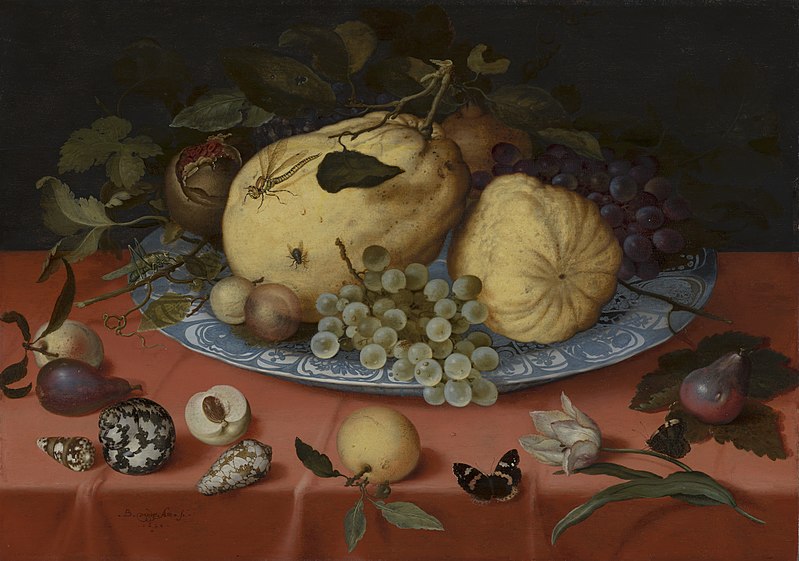
If you look at them in detail…..you develop an appreciation of how beautiful insects are
K. E. Humans are frightened of insects. How do you make people feel more positive about them?
M. D. The thing that scares people is that they look so different from us. And I can understand. But if you start looking at them in a detailed way, you develop an appreciation of how beautiful insects are. Small kids under the age of seven are usually quite interested in bugs. But then if they put something in their mouth or they start to tear off a leg, parents say, “Don’t do that, yuck, throw it away!” That’s where the dislike starts. So we need positive exposure to insects.
That’s what we try to do with the lecture series and any kind of activity I can be involved in. We need to see that our hosts on this planet are really so valuable to us in so many ways, and we should appreciate them better than we do. In 2017, we saw the first publication on insect decline that got a lot of attention – it made headlines around the globe. The good news is that people then became concerned – which shows that the public does understand that we’re dependent on insects. That’s a good basis on which to build.
K. E. In your 2010 talk, you showed a slide of yourself in China eating insects like caterpillars, saying that people eat insects in 80% of the world – normalizing the practice. But now with the coronavirus pandemic, people are feeling quite comfortable judging the “exotic” eating habits of Chinese people. On the one hand, I understand concerns regarding the dangers of encroachment on wildlife. But on the other hand, fears raised by COVID-19 might make it more difficult to convince people to eat insects now. How do you reconcile all this?
M. D. Those who already eat insects foraged from the wild will certainly continue to do so, but to make insect-eating a mainstream activity in the West, we’re only encouraging consumption of farm-produced insects, which will have to meet with all food safety requirements. There’s no safety issue because there’s very strict regulation, checks for pathogens, and so on.
K. E. Could the rise of eating farmed insects help keep people from pushing further into wilderness for food?
M. D. Yes. In fact, if we start shifting to farming insects instead of conventional livestock, we’re likely to prevent pathogens jumping from livestock to humans – such as with bird flu, swine flu, foot and mouth disease, and so on. In any case, insects differ so much from humans that even when they do have microbes, they’ll be so distantly related that there’s a very small chance that they’d cause us problems.
‘Without insects we will not survive on this planet’
K. E. You also said in your talk that if we didn’t have insects, humans would not be able to survive on this planet. It was a pretty stark thing to say.
M. D. In 2010, people were less aware how dependent we are on nature. This pandemic is helping to wake people up to the dangers – as well as to the good things we take for granted. Part of this crisis has to do with our dependence on animals, which makes us encroach further into wildernesses – the reservoir of diseases like COVID-19. We must pay attention, rather than think we can simply ignore all the signs. We need to take the science very seriously.
K. E. What’s next for you?
M. D. Taking what we learned from Kenya, we’re now evolving a project, Insects for Peace, with the Universidad Nacional in Colombia to help smallholder peasants that used to be members of the FARC community rebuild their livelihoods. These former guerrilla fighters lost everything in the 2016 peace agreement with the government. Raising insects requires few inputs but generates substantial output, which could help connect them economically to other parts of society. So insects may even perhaps contribute to the peace process. It brings me a lot of satisfaction to expand my fundamental research to help change society.

